#weltchronik
Text

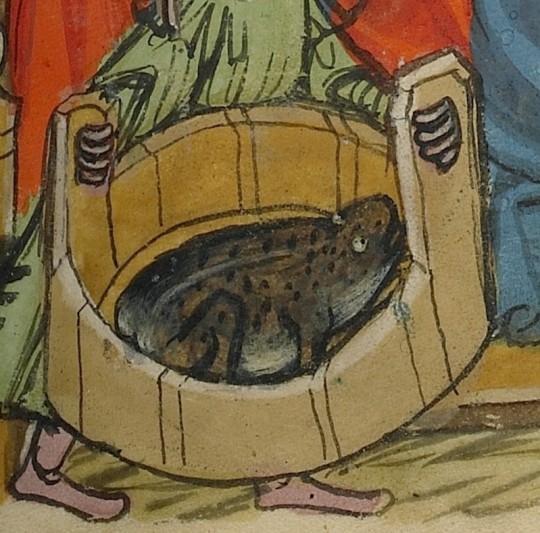
nero giving birth to a toad
illustration from a copy of the "weltchronik" ("chronicle of the world") by rudolf von ems, bavaria, c. 1400-1410
source: Getty Museum Collection, Ms. 33 (88.MP.70), fol. 226r
2K notes
·
View notes
Text

'As I have done, so God has paid me back'
The Canaanite king Adoni-Bezek made a habit of mutilating the limbs of rulers he defeated. In Judges (1:4-7), the Israelite forces led by Judah and Simeon kill 10,000 men in their bloody assault on Canaan, capture the Canaanite king Adoni-Bezek, and go full-on eye-for-an-eye with him: “Seventy kings with their thumbs and big toes cut off used to pick up scraps under my table," Adoni-Bezek says. "As I have done, so God has paid me back.”
The image is from a lavishly illustrated edition of the Weltchronik manuscript copied and illuminated around 1400, now belonging to the Getty Museum.
1 note
·
View note
Text
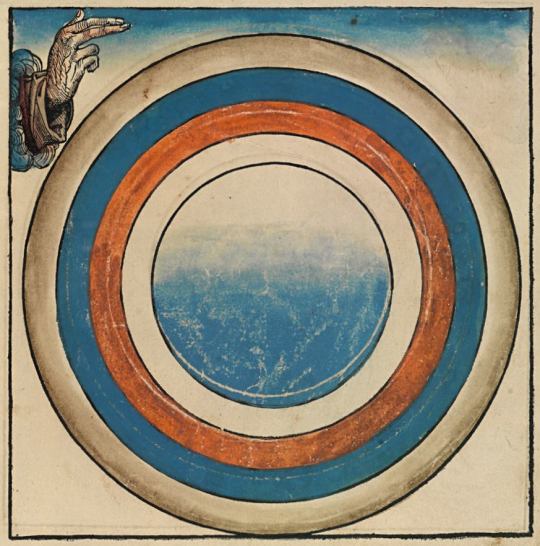
Schedelsche Weltchronik ou de la Chronique de Nuremberg
Quatrième jour, les étoiles, le soleil et la lune
6 notes
·
View notes
Text
Die große 9-Euro-Ticket-Tour: Ulm I
Auf der “Zu-erledigen-Liste” ganz oben: die letzte 9-Euro-Ticket-Tour. Zur Erinnerung: die Bundesregierung bescherte uns drei Monate voller Glückseligkeit mittels eines verbilligten Fahrscheins mit dem man praktisch überall hinfahren konnte. Coffeenewstom nutzte diese Gelegenheit um sich einmal das schöne Bayern anzuschauen, zum Beispiel Ingolstadt, Regensburg, die Walhalla oder Füssen. Die…

View On WordPress
#9-Euro-Ticket#9-Euro-Ticket-Tours#Donau#Donauufer#Fischerviertel#Gerberviertel#Metzgerturm#Napoleon#Rathaus von Ulm#Schedelsche Weltchronik#Schiefes Haus#Ulm#Ulmer Schachtel
1 note
·
View note
Note
Hey look at this picture of Alexander the great exploring the ocean with his pet chicken and pet cat from Jansen Enikel's Weltchronik.

i actually remember this from when i was his pet chicken. shit was so fucking dope the picture doesn't do it justice
1K notes
·
View notes
Photo
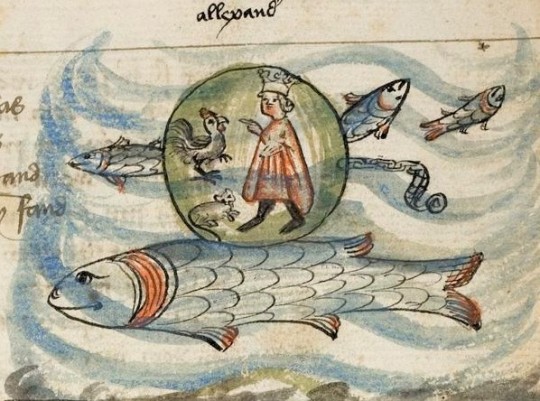
Alexander the Great decides it´s a good time to go out and explore the world and its endless wonders, so he builds a submarine prototype and takes his favorite pets: a cat and a chicken. Why not? Best company to check out the sea depths. From the medieval “Weltchronik” by Jens Enikel.
https://digi.ub.uni-heidelberg.de/diglit/cpg336
13 notes
·
View notes
Text

Imago Mortis [The Dance of Death], from the Weltchronik, or Liber Chronicarum [The Nuremberg Chronicle]
Michael Wolgemut (Nuremberg, Germany, 1434 – 1519)
1493
Woodcut with watercolor (hand coloring)
Blanton Museum of Art
22 notes
·
View notes
Photo
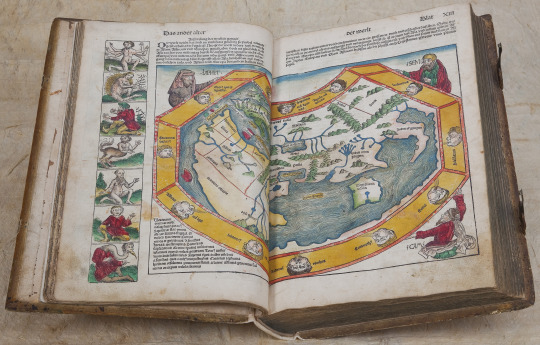
I need to find more examples of woodcut illustrations from the Nuremberg Chronicle, as I just love, love, love them.
Info from the Otis College of Art and Design, Los Angeles:
In 1493 the most elaborately illustrated book then printed in Europe, the Liber Chronicarum or Weltchronik appeared in print. This major work, by the Nuremberg doctor Hartmann Schedel, generally known as the Nuremberg Chronicle was printed by the foremost printer of the day in Nuremberg, Anton Koberger. It is a history of the world from the Creation to his own day and is remarkable for its illustrations, its graphic design and for its woodcuts and description of cities. The woodcut illustrations include events from the Bible, pictures of human monstrosities, portraits of Kings, Queens, saints and martyrs, and allegorical pictures of miracles. The maps and views, are all by or after the celebrated artists Michael Wohlgemut or Wilhelm Pleydenwurff, and are amongst the earliest printed representations of towns and cities available to us today.
Info from the Special Collections & Archives Research Center, Oregon State University:
Written first in Latin by Hartmann Schedel, and tranlated into German six months later, this work was a history of the world from the Creation to 1493. By actual count the Chronicle contains 1,809 Woodcuts. Many of the cuts were used over and over again to depict different personages and cities so that there are really only 645 separate subjects. The artists who so successfully completed this amazing number of woodcuts were Wohlgemuth and his step-son, Pleydenwurff. The book was financed by various citizens of Nuremberg who wished to show what a superb work could be achieved by their master printer, Anton Koberger.
The charm of the Nuremberg Chronicle lies in the fact that it gives an actual glimpse into the daily life of the people of this city five centuries ago. This was done unconsciously as far as the artists were concerned; at that period people conceived great personages of the past as dressing as they did themselves and living under conditions similar to their own.
At the time the book was published, potential purchasers were informed that the work could be obtained "unbound and uncolored for two Rhenish florins; bound and colored for six." Needless to say, most buyers chose the less expensive form, and today one seldom encounters colored copies.
Additional info about ‘incunabulum’ and the history of printing from Wikipedia.
Further examples of illustrations here.
0 notes
Text

Illustration of a "nuli" ("nuloi") in the Nuremberg Chronicle (Schedel'sche Weltchronik)
#nürnberg#nuli#nuloi#nürnberger chronik#nuremberg chronicle#illustration#schedel'sche weltchronik#abarimon#antipode#natural history#pliny the elder#attic nights#aulus gellius#baiton#thesaurus linguae romanae et britannicae#thomas cooper#nouloi#mount nulus#medieval bestiarie
4 notes
·
View notes
Text
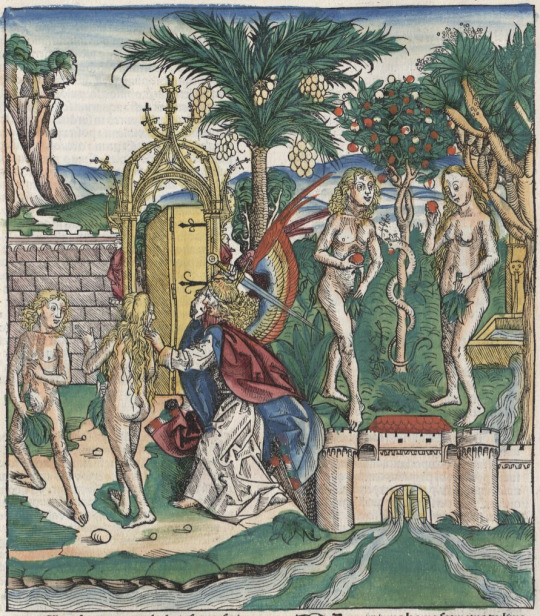
Paradise was the first gated community
Source: Nuremberg Chronicle (1493)
#nuremberg chronicle#schedel'sche weltchronik#schedelsche weltchronik#book printing#woodcut#paradise#adam and eve#medieval#the tiny crown on the snake is cute
2 notes
·
View notes
Text

Konstanzer Weltchronik
179 notes
·
View notes
Text

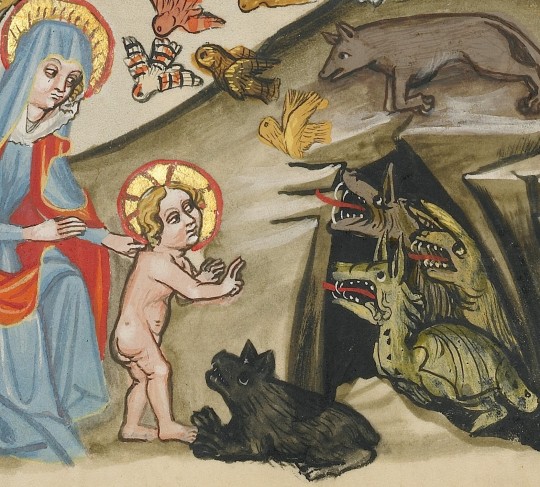
the animals recognize jesus
from brother philipp's "life of the virgin mary", regensburg (bavaria), c. 1400-1410
source: Getty Museum Collection, Ms. 33 (88.MP.70), fol. 249r
325 notes
·
View notes
Photo

A witch escapes on a horse with the devil. Schedelsche Weltchronik. Michael Wolgemut & Wilhelm Pleydenwurff, Nürmberg ~ 1483 • via Bibliothèque Infernale on FB
199 notes
·
View notes
Text

La création du monde : 2ème jour, le ciel et la mer
Toutes les illustrations sont tirées de Schedelsche Weltchronik ou de la Chronique de Nuremberg. Domaine public.
5 notes
·
View notes
Text




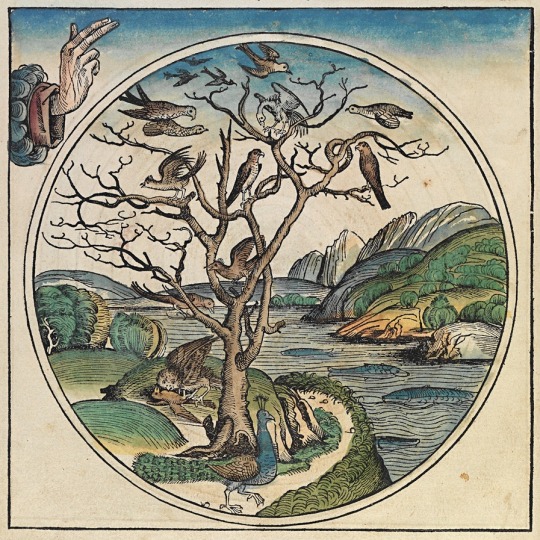

Hartmann Schedel - Weltchronik, 1493
37 notes
·
View notes
Photo

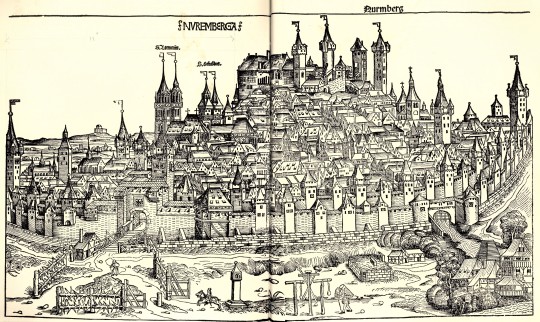
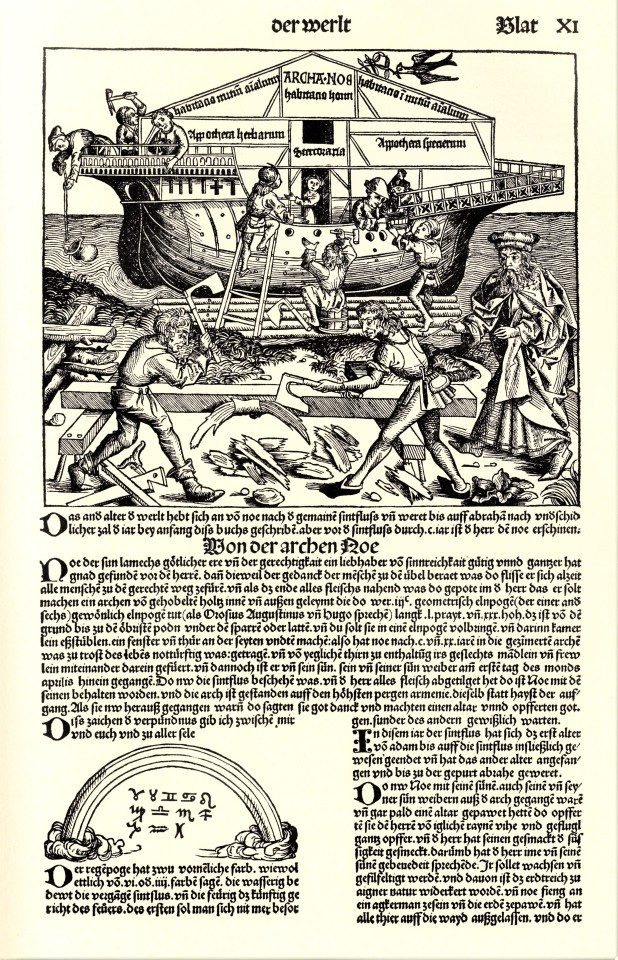

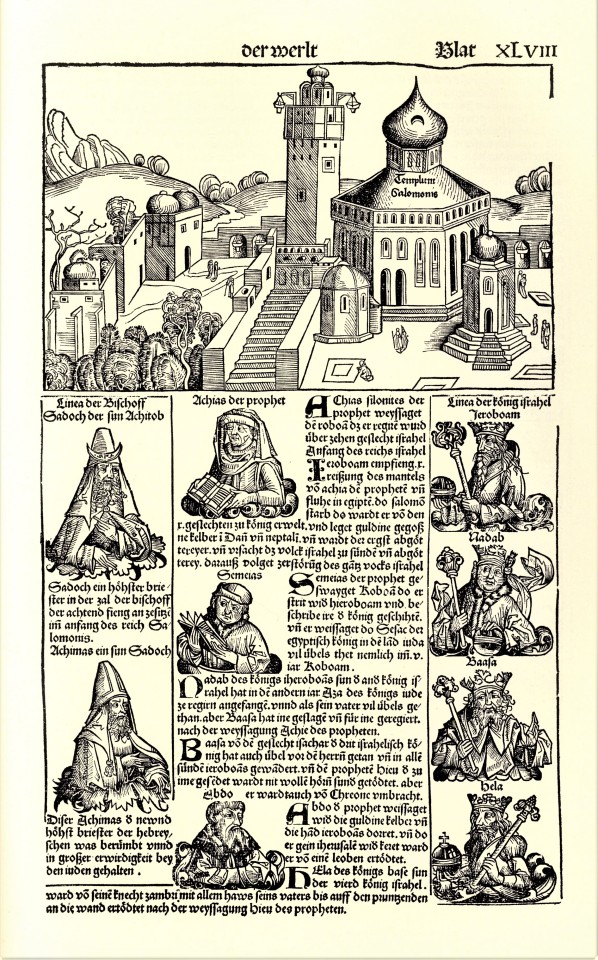




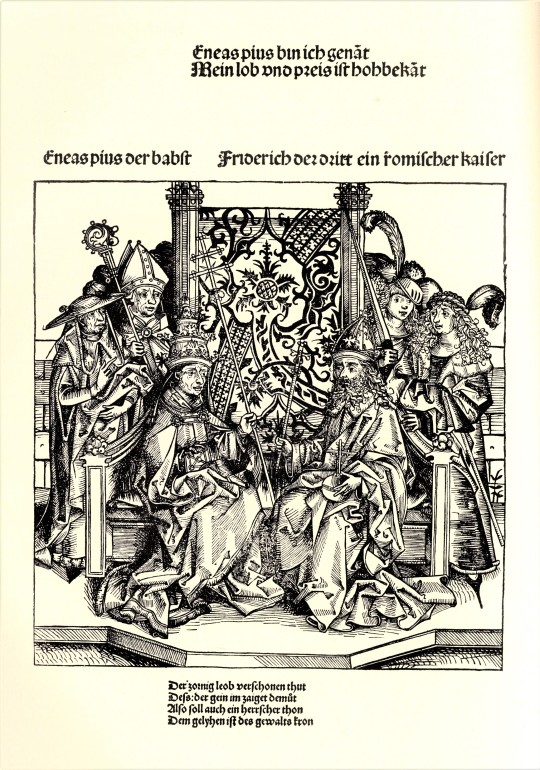
Milestone Monday
Today, July 12, marks the 528th anniversary of the Latin publication of the Nuremberg Chronicle (Liber Chronicarum or Die Schedelsche Weltchronik) in 1493. Published in Nuremberg by the printing magnate Anton Koberger, it is one of the most lavishly illustrated printed books of the incunabula period (the time of the earliest printed books from 1455-1501). A German translation from the Latin by George Alt, a humanist scribe at the Nuremberg treasury, was published on December 23, 1493. We hold a facsimile of the German-language imprint, so we are celebrating this milestone with images from our facsimile, which was published in New York in 1966 by Brussel & Brussel in a limited edition of 999 copies.
An encyclopedic world history, the Nuremberg Chronicle was commissioned by Nuremberg merchants Sebald Schreyer and Sebastian Kammermeister and written in Latin by the German historian, humanist, physician, and book collector Hartmann Schedel. Schreyer and Kammermeister also commissioned George Alt’s translation. Anton Koberger used different typefaces for the Latin and German editions, an Italian Rotunda for the Latin version and a Schwabacher Gothic font for the German. It is said that the printing of the Chronicle may have established the custom of using different types for different languages. The running heads and section titles for both editions were set in a larger Rotunda, while Lombardic-style capitals were used for two- and three-line initials.
Nuremberg printmakers Michael Wolgemut and his stepson Wilhelm Pleydenwurff were commissioned to design the layout and provide the woodcut illustrations.
Wolgemut operated a large workshop in the city, and in 1487-88 it produced an unprecedented 645 original woodcuts for the 1,809 illustrations in the Chronicle. The famous German artist and printmaker Albrecht Dürer, who was the godson of Anton Koberger, was also an apprentice in Wolgemut’s workshop from 1486 to 1489 and may have participated in designing some of the illustrations. Koberger printed approximately 1500 Latin copies and about 1000 German copies. Around 400 Latin and 300 German copies have survived into the 21st century. Many copies were cut up to be sold for their plates. Barbarous!
Shown here are the frontispiece depicting God enthroned in heaven, early biblical and apocalyptical scenes, two of the dozens of celebrated city views, and an illustration of Pope Pius II (1405-1464) and Holy Roman Emperor Frederick III (1415-1493).
View our other posts on Incunabula.
View our other Milestone Monday posts.
#Milestone Monday#milestones#Nuremberg Chronicle#incunabula#publishing history#printing history#15th century type#15th century books#Anton Koberger#Hartmann Schedel#George Alt#Sebald Schreyer#Sebastian Kammermeister#Michael Wolgemut#Wilhelm Pleydenwurff#Italian Rotunda#Schwabacher#Lombardic capitals#Pope Pius II#Frederick III
94 notes
·
View notes